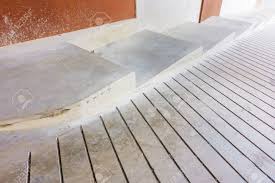Concrete is a versatile and widely used material in construction, known for its strength and durability. However, one common concern with concrete surfaces is their potential slipperiness, especially when exposed to water or other liquids. Whether in residential spaces, commercial areas, or public walkways, the need to make concrete non-slip is paramount for safety. In this article, we will explore various methods and techniques to enhance the traction of concrete surfaces, ensuring they remain safe and slip-resistant.
Surface Texture and Finishes:
One effective way to make concrete non-slip is by altering its surface texture. During the finishing process, various techniques can be applied to create a rougher surface. Broom finishing, for example, involves dragging a broom across the surface while it is still wet, leaving behind textured grooves. Exposed aggregate finishes, where the top layer is removed to reveal the underlying aggregate, also provide additional grip. These methods not only enhance slip resistance but can also add aesthetic appeal to the concrete.
Additives in the Mix:
Incorporating additives into the concrete mix is another strategy to improve traction. Silica sand, a commonly used additive, is mixed into the concrete to create a gritty texture. This sand becomes an integral part of the concrete surface, enhancing its slip resistance. Additionally, polymer or acrylic additives can be introduced to the mix, forming a thin layer on the surface that increases grip while maintaining the concrete’s durability.
Etching and Acid Washing:
Etching or acid washing is a post-installation method to make concrete surfaces non-slip. This process involves applying an acid solution to the cured concrete, which reacts with the surface, creating a textured finish. However, it is crucial to follow safety guidelines and use protective gear when working with acid. Etching is effective for both indoor and outdoor surfaces and is particularly useful for rejuvenating existing concrete that may have become slippery over time.
Non-Slip Sealers:
Applying a non-slip sealer is a practical and convenient solution to enhance traction on concrete surfaces. These sealers contain additives like silicon carbide or aluminum oxide, creating a textured surface when applied. Non-slip sealers not only improve grip but also offer protection against stains, weathering, and UV damage. Regular reapplication may be necessary, depending on the level of foot or vehicular traffic the concrete surface receives.
Rubberized Coatings:
Rubberized coatings or overlays provide a flexible and slip-resistant surface for concrete. These coatings are applied over the existing concrete and are available in various colors and textures. The rubberized material not only enhances traction but also provides a cushioning effect, making it suitable for areas where impact resistance is crucial, such as playgrounds or sports facilities.
Conclusion:
Ensuring the slip resistance of concrete surfaces is essential for the safety and functionality of various spaces. Whether through altering the surface texture during the finishing process, incorporating additives in the mix, acid washing, applying non-slip sealers, or using rubberized coatings, there are multiple methods available to make concrete non-slip. As architects, builders, and homeowners strive to create environments that prioritize safety without compromising aesthetics, these techniques play a pivotal role in achieving a balance between form and function in concrete design.

